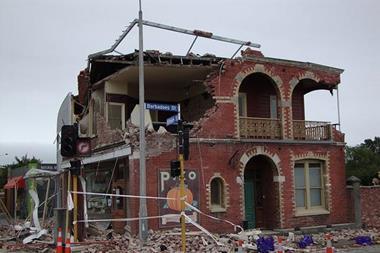Fixation on upturn in reinsurance rates is ‘premature’ says analyst at Baden-Baden
The global reinsurance market does not yet show signs of turning despite the confluence of unprecedented natural catastrophes in 2011, low interest rates, the continuing financial crisis and dwindling reserve surpluses.
Speaking at Guy Carpenter’s annual reinsurance symposium in Baden-Baden, KBW insurance analyst Chris Hitchings said that to trigger a cyclical upturn, there first needed to be a cyclical downturn, characterised by three to five years of competition-fuelled pricing decline, followed by what he described as a cyclical trough. This is where all understanding of claims experience disappears, holes start to open in reserves, and companies are forced to cut business to preserve capital.
Despite complaints from reinsurers that prices need to rise after several years of gradual softening, Hitchings contended that none of the tell-tale signs of a market fall are present in today’s global reinsurance market.
“The fixation on this question of when the reinsurance cyclical upturn will arrive seems somewhat premature,” Hitchings said. “We do not appear to have had a cyclical downturn yet.”
Hitchings contended that the price falls reinsurers bemoan have not happened. “US catastrophe rates are unchanged from post hurricanes Katrina, Rita and Wilma [in 2005], and they are 30% ahead of where we were in 2004,” Hitchings said. “Non-US catastrophe rates have fallen, but are now back above 2004 levels.” He conceded, however, that casualty reinsurance prices had fallen 20%.
He also contends that there is little sign of “dumb capacity” in the reinsurance industry - companies that are willing to accept business that is greatly underpriced or with too-loose terms and conditions.
While he acknowledged that there was less fat in reserves, Hitchings pointed out that the industry’s claims provisions are not yet in a critical state. “The recent years, 2009 and 2010, are being reserved less cautiously than those from 2004 to 2008, but certainly not as incautiously as the terrible years of 1999, 2000 and 2001.”
One of the signs of trouble, says Hitchings, is shareholder disenchantment with the industry because of high losses. Though it appears the industry has fallen out of favour with investors - almost all listed (re)insurers’ stock is trading below book value - Hitchings contends that the losses are not there to spook them. “They are valuing companies at a discount because they have made losses that have not been reported yet. That may be true of the primary market, but we don’t think it is true of reinsurance.”
However, PartnerRe chief executive Costas Miranthis disagreed with Hitchings about reinsurance pricing. “Over the past three to four years, it feels we have been on a downward slope. Certainly on a risk-adjusted basis, prices have been reducing,” he said, adding that this is in areas where there have not been large losses.
Miranthis said recent catastrophes, coupled with falling interest rates and dwindling reserve margins, mean the profitability of the current accident year is “challenged”.
Market views
Financial and economic threats were high on the agenda at this week’s Baden-Baden event:
“You cannot discount the threat that we may go into another recession, which will be a lot more severe than the last, because governments have spent all their bullets.”
Costas Miranthis, president and chief executive, PartnerRe
“Is the demand for risk financing being met efficiently? We don’t think so. We see a lot of unfulfilled demand, suggesting the industry’s basic business model is not financing peak risk very efficiently.”
Frank Majors, managing principal, Nephila Capital
“The ongoing financial crisis is not a sequel, it is the same one that started in 2008. In 2008 there was a fire brigade to put out the fire. In 2011 the fire brigade is on fire.”
Clement Booth, member of the board of management at Allianz






































No comments yet